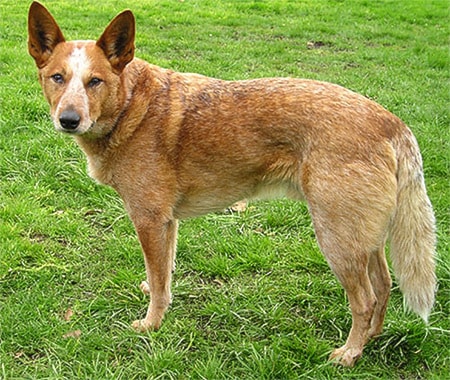Following in good faith her father’s outdated instructions for docking puppies’ tails helped a local dog breeder escape conviction on an animal cruelty charge.
Randall Gottfriedson, 23, was found not guilty after a half-day trial this week in provincial court in Penticton of a single count of causing an animal to be in continuing distress.
The charge is contained in the B.C. Prevention of Cruelty to Animals Act and carries with it a maximum penalty of a $75,000 fine and two years in jail.
Court heard Gottfriedson was reported to an SPCA cruelty investigator by a Kamloops veterinarian who saw one of the Cawston breeder’s puppies three days after it was sold for $250.
Dr. Andrew Reid testified the Australian cattle dog was about eight weeks old when it was brought to his office for a checkup on March 2, 2012.
He said he noticed right away the puppy, named Squeak, had two bands wrapped tightly around its tail in an apparent effort to cut off blood supply and cause a portion of the tail to fall off.
The veterinarian said Squeak appeared to be in distress and the tail was hard, swollen, infected and seemed to be painful to the touch.
“The puppy was not willing to raise its tail, it was not willing to wag its tail and wasn’t willing — because of the discomfort — wasn’t willing to interact in a way one would expect of a puppy,” Reid said.
He told the court the tailing bands would have likely caused Squeak a “prolonged period of chronic discomfort.”
Reid explained that the current generally accepted method of tail docking sees the appendage clipped surgically by a veterinarian when a dog is just a few days old.
Squeak underwent the surgical procedure following the visit to Reid’s office.
Gottfriedson testified she learned the banding method of tail docking from her father, a rancher, and didn’t think to consult a veterinarian.
She told the court she put the bands on Squeak’s tail about a week before handing over the dog to its new owner, who asked that the pet’s tail be docked.
Gottfriedson admitted her dad suggested the puppy stay with its mother — who could help stave off infection — until the tail fell off, which typically takes two weeks, but instead relented at the request of the new owner.
“I had advised (the new owner) to wait a little longer… but she was persistent and wanted her dog,” said Gottfriedson, who also told the court she didn’t see Squeak exhibit any signs of distress but has since come to regret her actions.
Judge Meg Shaw ruled Gottfriedson had indeed caused the dog to be in distress, but also found the breeder had taken reasonable care to avoid doing so and was therefore not guilty of the offence.
Gottfriedson “followed the directions, and was under the guidance, of her father, a traditional First Nations rancher,” Shaw said, and “provided care for the puppy as appropriately as she knew how.”
“I find Ms. Gottfriedson believed in mistaken facts that the old way of docking tails was not stressful or painful to the puppy,” the judge continued.
“With the knowledge she has now, she will know the traditional method of docking the tails of puppies is no longer appropriate.”
